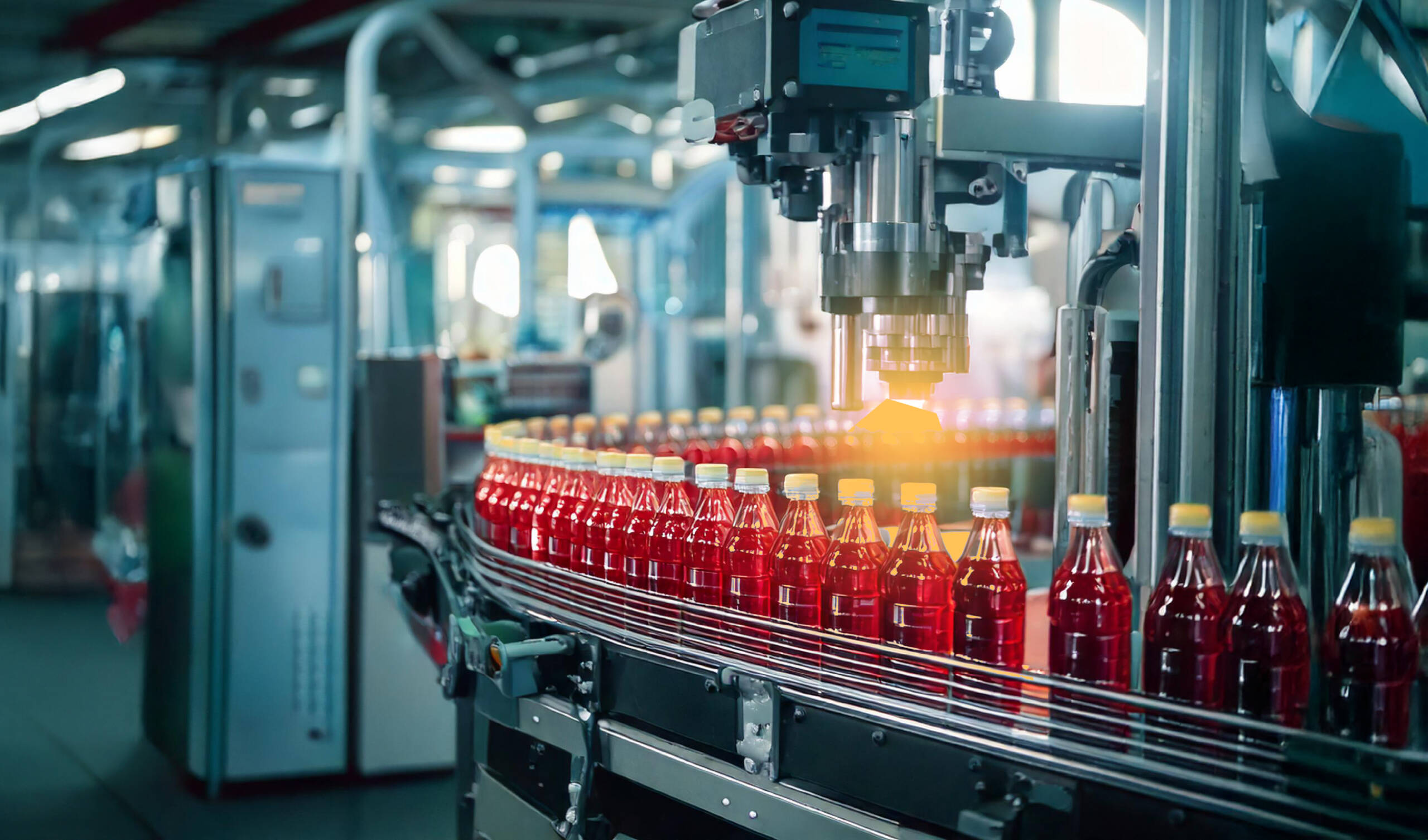Manufacturing has undergone rapid change, to say the least. Now it is high-stakes times for industries like tyre manufacturing, F&B, and industrial machinery. In such scenarios, precision and efficiency become inalienable attributes of the business. Such a scenario becomes the hub wherein automated quality inspection has become a cornerstone technology in enabling businesses to improve operations without errors and resultant downtime.
In this blog, we’ll explore how automated quality inspection is revolutionizing the manufacturing sector, delve into its integration with AI-based predictive maintenance, and uncover the transformative potential of predictive maintenance technologies for businesses that rely on large or robust industrial machinery.
What Is Automated Quality Inspection?
It makes use of the most advanced technologies available, including machine vision, deep learning models, artificial intelligence, and sensors, to detect and measure defects, inconsistencies, or deviations from the standards without human intervention.
For example, in the tire manufacturing sector, an automation system could potentially check the tread pattern, the quality of the sidewall, inner liner, or uniformity that no human can even achieve at such fantastic speeds. In the F&B manufacturing industry, similar systems ensure that the products are free from defects or non-compliance through process variation.
Key Benefits of Automated Quality Inspection in Manufacturing
1. Better Accuracy and Uniformity
Manual inspection is prone to human error, especially when dealing with complex or large-scale machinery. Automated quality inspection eliminates human error and fatigue and gives consistent results for all operations.
That means for tire manufacturers, every tire meets exacting standards. F&B manufacturers can have error-free packaging, while industrial machinery operators can ensure flawless product quality and safety standards.
2. Speed and Scalability
The traditional checking process is actually a bottleneck of production lines. Automated systems check hundreds or thousands of units in a minute, but without losing even an iota of accuracy.
Such scalability becomes pertinent for the companies dealing with heavy volumes, which may include bottle manufacturing plants producing beverages or those manufacturing tyres wherein idle time actually results in a high loss of money.
3. Cost Efficiency and Waste Reduction
Early defects at the production stage reduce waste and rework. Even costly machine breakdowns, which more often than not result from unseen wear or slight problems accumulated over time, are prevented with predictive maintenance solutions integrated.
In equipment that is bound to require planned maintenance, maximum uptime coupled with much more extended lifecycles of expensive equipment comes along with automated inspection and AI-based predictive maintenance.
4. Compliance with Laws and Customer Satisfaction
The F&B industries are highly regulated. Automated quality inspection ensures that the food is in compliance with safety standards and thus increases customer confidence in getting a high-quality product every time. The same applies to tire manufacturing and industrial machinery manufacturing, increasing long-term brand loyalty.
How AI-Based Predictive Maintenance Meets Automated Inspection
The fusion of the benefits of predictive maintenance with automated quality inspection is a giant leap for accuracy in manufacturing.
What is Predictive Maintenance Technology?
Predictive maintenance is the use of AI, IoT sensors, and data analytics to predict when equipment is likely to fail. It is different from the traditional practices of maintenance which could be reactive or time-based, and provides actionable insights based on real-time data.
For example, industrial machinery anomaly detection would require sensor technologies that detect changes in vibrational acceleration, temperature, and pressure and consequently predict a potential problem. Coupled with inspection automation, that would ensure action is taken proactively towards a potential issue.
The Hybrid of Predictive Maintenance with Automated Quality Inspection
1. Real-time Monitoring and Intelligence
The key to modern manufacturing is real-time monitoring of the production process and machinery health. Automated quality inspection systems can feed critical data into AI-based predictive maintenance platforms that provide not only insight into product defects but also the operational health of machinery.
This would mean anomaly detection in curing presses or mixers by tyre manufacturers before the problem manifests into a bad batch. For F&B manufacturers, they can monitor conveyor belts and bottling machines so that downtime during peak hours does not occur.
2. Reduction in Machine Downtime
Predictive maintenance would track how issues, which were previously identified through quality inspections, are originating from the root.
For instance, if the automated inspection system continues to indicate defects in a specific section of the production line, predictive maintenance tools could evaluate equipment for wear and tear or failure.
This approach reduces downtime while keeping the schedules running on the production plans.
3. Optimal Resource Allocation
Predictive maintenance technologies enable manufacturers to use their resources in the best possible way. No longer do they have to service all machinery based on routine but only those identified as having high risks by these automated systems can be the focal point of effort. This results in reduced costs for maintenance and an increase in productivity.
Applications across Industries
Tire Manufacturing
Problem: Even tread, strength structure, quality and durability.
Solution: Automated quality inspection detects variations in tyre building; AI-based predictive maintenance ensures the reliability of critical equipment, such as extrusion machines and curing presses.
Food and Beverage Manufacturing
Problem: Packaging accuracy, product safety, and regulatory compliance
Solution: Vision-based systems detect misaligned labels, damaged packaging, or contamination. Predictive maintenance tools monitor machinery like fillers and sealers for signs of degradation.
Industrial Machinery
Challenge: Big machinery wear and tear; reduce shock failure events.
Solution: Automated inspections are used to detect stress fractures or material fatigue in structural components. Predictive maintenance solutions prevent asset failures that could be costly and give clear warnings in advance.
Challenges and Considerations
Although the benefits brought about by automated quality inspection and predictive maintenance are numerous, proper planning in implementing them needs to be carried out well.
1. Huge Capital Expense
High installation costs of automated inspection systems and predictive maintenance tools can be a challenge for small manufacturing companies. The long-term return on investment is seen in the form of reduced downtime, improved quality, and reduced waste.
2. Training and Integration
Implementation of these technologies demands seamless integration with the current processes and training of employees. Manufacturers need to look for user-friendly systems compatible with their operational workflows.
3. Data Management and Security
The automated inspection and predictive maintenance produce enormous amounts of data. This data needs to be stored safely, analyzed in real time, and then converted into actionable insights to extract the maximum value from these technologies.
Future Trends in Automated Quality Inspection and Predictive Maintenance
1. Edge Computing, IoT and AIoT
With the convergence of edge computing IoT and AIoT, it is possible to process data much faster directly at the source, reduce latency, and improve real-time decision-making in predictive maintenance and automated inspection.
2. Advanced Machine Learning Algorithms
The AI-driven systems will be much more sophisticated, enabling more accurate defect detection and industry-specific predictive analytics.
3. Industry-Specific Solutions
The greater the intensity of demand, the sooner manufacturers expect their solution to be further tailored to every emerging sectoral challenge, from the inspection of tires to the real-time monitoring of F&B.
Conclusion: Confidence in the future
What AI-based quality inspection automation is creating is a true renaissance of manufacturing. Something more than going a step to much higher precision or efficiency, empowering manufacturers to avert potential and avoid huge, unforeseen future problems.
But for the makers of tires as well as operators of industrial F&B producers, it is more: it is just a competitive edge that will then form the foundations for sustainable success.
Want to enhance your precision of manufacturing? Understand how newer technologies such as automated quality inspection and predictive maintenance are shaping up current operations. Discuss your tailored industrial solution today by contacting us at.


